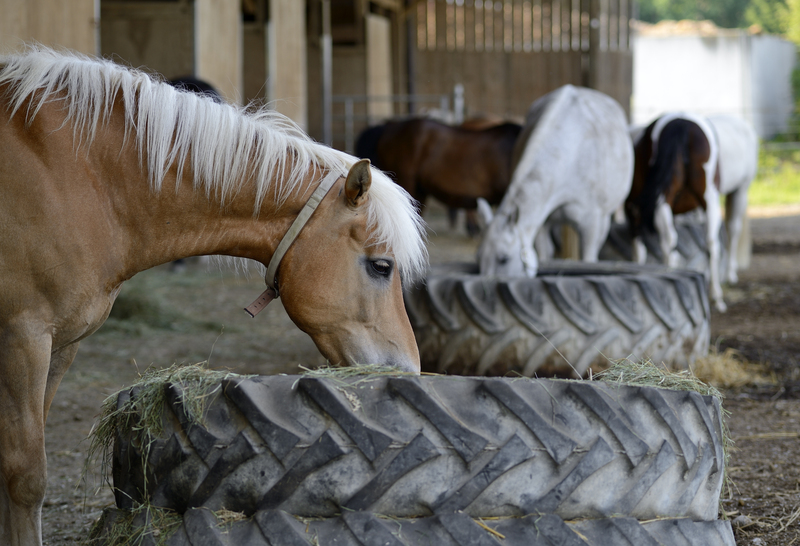Eco-Conscious Ways to Upcycle Plastic
Posted on 14/04/2025
Plastic pollution has become one of the most pressing environmental problems of our time. The vast majority of plastic products we use daily are disposed of improperly, leading to pollution in forests, oceans, and urban areas. An effective way to mitigate this issue is through upcycling - the process of repurposing waste materials into valuable products. This article explores various eco-conscious ways to upcycle plastic, emphasizing how we can make a positive impact on the environment.
The Environmental Impact of Plastic Waste
According to recent studies, approximately 8 million tons of plastic waste end up in the ocean every year. This not only harms marine life but also enters the food chain, posing significant health risks to humans. Additionally, plastic break down into microplastics, which further pollutes waterways and soil. Upcycling plastic can significantly reduce these environmental hazards by reintroducing waste materials into the production cycle, thus preventing them from reaching landfills and oceans.

Why Upcycling is Important
Upcycling serves as a sustainable alternative to traditional recycling. While recycling involves breaking down materials to create new products, upcycling enhances them, granting them a second life in a more valuable form. The benefits of upcycling include:
- If each example is in a list item, it should be a full sentence.
- Reduced Waste: By repurposing plastic items, we minimize waste, reducing landfill usage and oceanic pollution.
- Conservation of Resources: Upcycling uses less energy compared to new production, thus conserving resources.
- Economic Benefits: Creating new products from waste materials can generate income and create job opportunities.
- Promoting Creativity: Upcycling encourages innovation and creativity, providing unique and customized solutions for everyday needs.
Practical Ways to Upcycle Plastic
Plastic Bottle Planters
One of the simplest yet effective ways to upcycle plastic bottles is to transform them into planters. By cutting a bottle in half, you can create two individual planters. Decorate the exterior with paint, fabric, or other materials to add a personal touch. Drill or puncture small holes at the bottom to ensure proper drainage. These planters are perfect for herbs, succulents, and small flowers, making them an excellent addition to both indoor and outdoor spaces.
Plastic Bag Yarn (Plarn)
Plastic bags are notorious for contributing to environmental degradation. An innovative way to upcycle them is by creating plastic yarn, or plarn. Plarn can be knitted or crocheted into various items such as reusable shopping bags, mats, and even clothing. To make plarn, cut plastic bags into strips and loop them together to form a continuous strand. This approach not only reduces plastic waste but also offers durable alternatives to everyday products.
DIY Storage Solutions
Many plastic containers and bottles can be upcycled into storage solutions for home and office use. For instance:
- Drawer Dividers: Cut and resize plastic bottles to fit inside drawers, creating separate compartments for organizing small items like stationery, jewelry, or makeup.
- Hanging Storage: Attach plastic bottles to walls or pegboards to create hanging storage for tools, craft supplies, or kitchen utensils.
- Desktop Organizers: Use plastic containers as organizers for pens, markers, paper clips, and other office supplies.
Artistic Upcycling: Enhancing Aesthetic Value
Plastic Bottle Sculptures
Artists worldwide are embracing the concept of upcycling to create stunning sculptures from discarded plastic bottles. These sculptures can range from life-sized animals to abstract shapes and figures. The process typically involves cutting, reshaping, and assembling plastic bottles, often combined with other materials like wire or wood, to enhance stability and appearance. These artworks not only serve as a visual reminder of plastic waste but also inspire others to think creatively about upcycling.
Jewelry and Accessories
Turning plastic into fashionable accessories is another growing trend. Plastic bottles, caps, and even straws can be transformed into unique pieces of jewelry, such as earrings, necklaces, and bracelets. By cutting and reshaping plastic into beads and charms, you can create custom designs that are both eco-friendly and stylish. This form of upcycling is particularly popular in communities that promote sustainable fashion and zero-waste living.
Upcycling in the Community: Collective Efforts
Communities around the world are recognizing the importance of upcycling plastic as a collective effort. Several initiatives and workshops promote upcycling practices, fostering environmental awareness and communal responsibility.
Community Workshops
Workshops held in schools, libraries, and community centers teach participants how to upcycle plastic creatively and effectively. These workshops often cover various projects, from beginner to advanced levels, ensuring that people of all ages and skill sets can participate. They also serve as platforms for sharing ideas, fostering a sense of community and collective action against plastic pollution.
Upcycling Events and Competitions
Events and competitions dedicated to upcycling plastic are gaining popularity. These gatherings encourage innovation and competition among participants, with awards and recognition for the most creative and impactful projects. Such events not only highlight the importance of upcycling but also motivate more people to get involved in eco-conscious practices.
The Role of Businesses in Upcycling
Businesses, both large and small, play a crucial role in the upcycling movement. Many companies are incorporating upcycled materials into their products, showcasing the viability of sustainable practices in the mainstream market.
Corporate Responsibility
Many corporations are committing to sustainable practices by integrating upcycled plastic into their production processes. From fashion brands creating clothing from recycled plastic bottles to furniture manufacturers using upcycled plastic for stylish and durable pieces, the business sector is proving that upcycling can be both environmentally friendly and profitable. This approach not only helps in reducing plastic waste but also enhances the brand's image as a responsible and forward-thinking entity.
Startup Innovations
Startups around the world are emerging with innovative solutions centered around upcycling. These businesses often operate on the principles of zero waste, circular economy, and environmental sustainability. Examples include companies that convert plastic waste into building materials, toys, and even art supplies. These startups not only help reduce plastic pollution but also inspire larger corporations and consumers to adopt more sustainable practices.

Conclusion
Upcycling plastic is a powerful and effective way to combat the growing issue of plastic pollution. By adopting eco-conscious upcycling practices, individuals, communities, and businesses can make significant contributions to environmental sustainability. From practical home solutions and artistic projects to community initiatives and corporate innovations, the possibilities for upcycling plastic are endless. As more people embrace these practices, we move closer to a world where waste is minimized, resources are conserved, and the environment is protected for future generations.
Final Call to Action
Everyone can play a part in the upcycling movement. Start small by transforming everyday plastic items into useful or decorative objects, and gradually extend these practices to your community. Support businesses and initiatives that prioritize upcycling, and participate in workshops and events to learn more about sustainable practices. Together, we can make a meaningful difference in addressing plastic pollution and fostering a more sustainable future.





